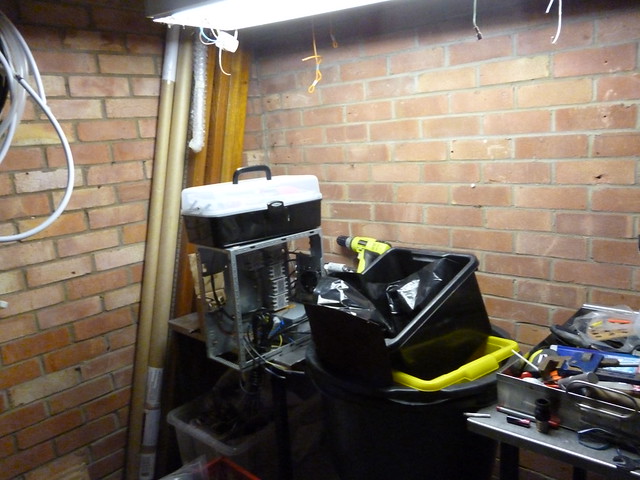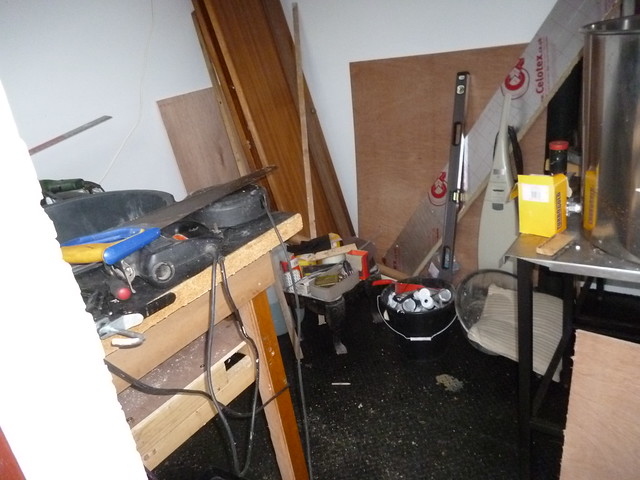I moved from kitchen to garage and at same time got an old fridge/freezer. My idea was to just use heating, garage should be cooler than kitchen so this seemed logical, however the fridge/freezer is very well insulated, and if the garage is over 10[FONT="]ðC then the heat from fermenting is too much so cooling is required. However it only needs the cooling for first 3 or 4 days, after that it is heating only. So I start a brew in freezer compartment controlled to 19[/FONT][FONT="][FONT="]ðC then once it has been running for 3 or 4 days, I can more to fridge depending on room available and after 3 or 4 days temperature can rise to 22[/FONT][/FONT][FONT="][FONT="][FONT="]ðC.
So you need to consider how you will remove heat in first 3 to 4 days, as said it could be a brew fridge, or some other method like water baths, but if like me, you want to be able to walk away and leave it, then a brew fridge is must for that start time. However once that start time is over, any insulated box will keep brew to right temperature with a simple light bulb and a controller, I found 8W is all that is required inside a switched off fridge or freezer to keep temperature to 22[/FONT][/FONT][/FONT][FONT="][FONT="][FONT="][FONT="]ðC all year around with a STC-1000 to control bulb. Even in height of summer in North Wales inside the fridge stayed cool during the day if you don't open door, as average temperature day and night still under 22[/FONT][/FONT][/FONT][/FONT][FONT="][FONT="][FONT="][FONT="][FONT="]ðC even if it peaks to 28[/FONT][/FONT][/FONT][/FONT][/FONT][FONT="][FONT="][FONT="][FONT="][FONT="][FONT="]ðC.
Around the fermenter I pack the bottles to condition, this has a two fold use, one if keeps bottles to correct temperature, and two they act as heat sinks for any heat from fermenter. So my brewing is in four stages.
1) 9 - 11 days in fermenter in freezer with both cooling and heating.
2)[/FONT][/FONT][/FONT] 9 - 11 days in fermenter in fridge with only heating.
3) 9 - 11 days in bottles packed around the fermenters.
4) Moved to shed to store until drunk.
So when going flat out with two fermenters I can produce 40 pints every 9 - 11 days. In real terms don't need that much, so often works out a brew every two weeks or so and each brew takes around 24 days before going into bottles. The freezer takes priority when switched on, so although a fridge/freezer, the motor never runs long enough to get freezer cool enough for any cooling to go to fridge. I did not go out and buy fridge/freezer it was condemned as faulty insulation so replace in kitchen but good enough for me in garage.
I have a chest freezer ear marked as a replacement when my mother either goes into a home or dies, the problem with set up I have is freezer is too low to syphon out of the fermenter. So it has to be lifted to fridge first, this disturbs the sediment so has to sit in fridge for a day before being transferred to clean fermenter. So one or two days with only one brew on the go, the chest freezer will have same problem, if raised then too high to get fermenter inside, if not raised too low to syphon from. Since the brew has CO2 in it, when one syphons it pulls this out of the brew, so I found you need 12 inches head so bottom of fermenter needs to be 12 inches higher than top of what you are syphoning into, so if pop bottle is 12 inches high then fermenter needs to be 24 inches off the ground or more.
With a chest freezer you can use a winch, this allows a slow careful rise in height without shaking the fermenter, with upright you can't really move the fermenter with out shaking, unless you have some very careful arrangement. Consider how you will move fermenter, and if the fridge needs to be on a table or something to get extra height. You could use a tap instead of syphon but design around height needed to transfer or bottle.
In kitchen I stopped brewing in summer, in garage with fridge/freezer I brew all year around. I only brew kits, not got space for brewing from grain. [/FONT] [/FONT] [/FONT]






















![BREWING THERMOMETER STICKERS ACCURATELY MONITOR FERMENTING BEER & WINE LIQUID TEMPERATURES 5PCS HOME BREW SPIRITS WINE LCD ADHESIVE [US]](https://m.media-amazon.com/images/I/311DDjo2X3L._SL500_.jpg)




















